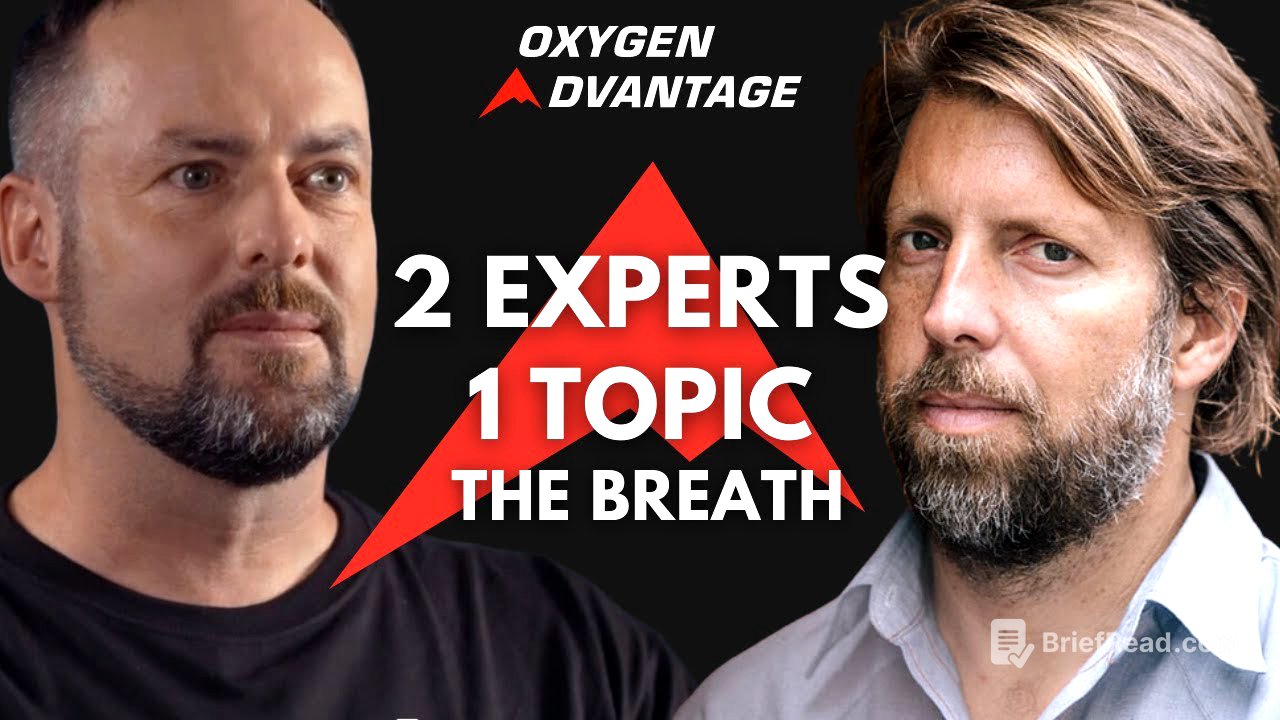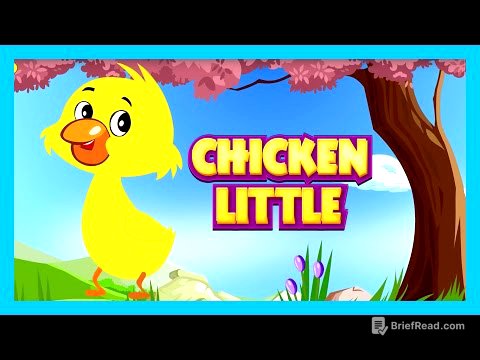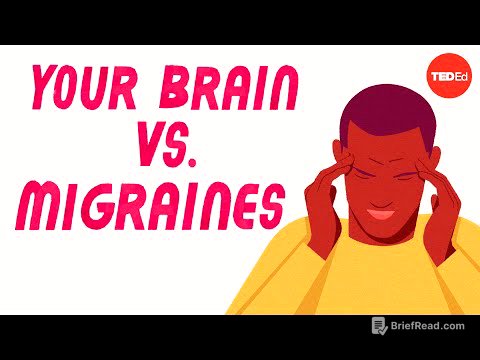TLDR;
James Nestor's book, "Breath: The New Science of a Lost Art," explores the profound impact of breathing on our health. Nestor shares his journey into understanding breathing, starting from personal respiratory issues to covering freediving championships. The book uncovers how breathing affects everything from facial structure and dental health to asthma, sleep apnea, and mental well-being. It highlights the importance of nasal breathing, diaphragmatic breathing, and awareness of different breathing techniques, arguing that breathing is a missing pillar of health as crucial as diet and exercise.
- Breathing is a lost art due to ignorance in modern medicine.
- Nasal breathing is crucial for overall health and craniofacial development.
- Different breathing techniques have various benefits and should be tailored to individual needs.
Introduction to Breathing and James Nestor's Journey [0:00]
James Nestor, an investigative journalist, got into breathing research due to his own respiratory problems and a strange experience in a breathing class. He was further intrigued while covering the world freediving championship, where athletes demonstrated incredible breath-holding abilities through specific breathing techniques. This led him to explore the science of breathing and its impact on various aspects of health, culminating in his book "Breath: The New Science of a Lost Art."
The Lost Art of Breathing and Skepticism [4:19]
The title "The New Science of a Lost Art" reflects how modern medicine often overlooks the importance of breathing. People are generally skeptical about how something as basic as breathing can significantly affect their health, including facial structure, asthma, allergies, snoring, sleep apnea, and hypertension. Despite scientific evidence spanning over a century, the benefits of proper breathing have been largely ignored, though awareness is growing, especially with increased focus on respiratory health due to recent events.
Craniofacial Growth and the Importance of Nasal Breathing [7:01]
Dentists have observed that mouth breathing impacts craniofacial growth, yet this knowledge isn't widely shared with parents seeking orthodontic treatment for their children. Humans are unique in having crooked teeth; wild animals and ancient human skeletons show perfectly straight teeth. This is because the softness of modern diets has led to smaller mouths, causing teeth to grow crooked and airways to become smaller, inhibiting nasal breathing and contributing to snoring, sleep apnea, and even ADHD.
The Science Behind Nasal Breathing [11:00]
Despite proven data, the importance of nasal breathing is often ignored. Studies show that a high arched palate can lead to breathing difficulties and even sudden infant death syndrome (SIDS). The nose is a "use it or lose it" organ; when not used, it becomes congested. Nasal breathing is essential, and even those with deviated septums can improve their breathing with practice.
Practical Experience with Nasal Breathing [16:00]
Clinical experience shows that most people can establish nasal breathing with effort. Breath-holding exercises can open up the nose. The human nose is an amazing organ that functions better with use. Even with structural issues like a deviated septum, habitual nasal breathing can eliminate the need for surgery.
The 10-Day Mouth Breathing Experiment [21:40]
To understand the effects of mouth breathing, James Nestor and a colleague conducted a 10-day experiment where they plugged their noses, forcing them to breathe through their mouths. The results were dramatic: snoring increased significantly, sleep apnea developed, stress levels rose, and blood pressure increased. Upon resuming nasal breathing, these issues disappeared, highlighting the rapid and detrimental effects of mouth breathing.
Diverse Breathing Techniques and Their Benefits [26:20]
There are numerous breathing techniques, each with its own benefits. As lung capacity decreases with age, switching to mouth breathing is not the solution; instead, slower, deeper diaphragmatic breaths are needed. Different techniques like heavy breathing, Wim Hof method, and slow breathing all have value and can be incorporated based on individual needs. Understanding the "why" behind breathing techniques is crucial for their effective application.
Holotropic Breathing and its Effects [31:45]
Holotropic breathing, which involves sustained hyperventilation, can be beneficial for certain conditions like trauma and mental disorders. While it may seem counterintuitive, it works by consciously depriving the brain of oxygen, which can reset the system and promote relaxation afterward. This technique, like the Wim Hof method, involves inducing a stress state to achieve a deeper state of relaxation.
The Wim Hof Method and Autoimmune Diseases [48:00]
The Wim Hof method, combining heavy breathing and cold therapy, has shown benefits for autoimmune diseases by helping individuals control their nervous and immune systems. While cold therapy is important, breathing is the anchor of this technique. The method stimulates adrenaline, norepinephrine, and cortisol, which, when consciously controlled, can have therapeutic effects.
Historical Perspectives and the Importance of Respiratory Health [51:18]
The importance of breathing has been recognized throughout history, with studies in the early 20th century linking mouth breathing to tuberculosis. Respiratory health is crucial for dealing with viral infections. Nasal breathing enhances nitric oxide production, which has antiviral properties. Breathing is as important as exercise and diet for a long and healthy life, representing a missing pillar of health.









![[Eng Sub] Renegade Immortal EP119](https://wm-img.halpindev.com/p-briefread_c-10_b-10/urlb/aHR0cDovL2ltZy55b3V0dWJlLmNvbS92aS9vLURqQXgySURKUS9ocWRlZmF1bHQuanBn.jpg)